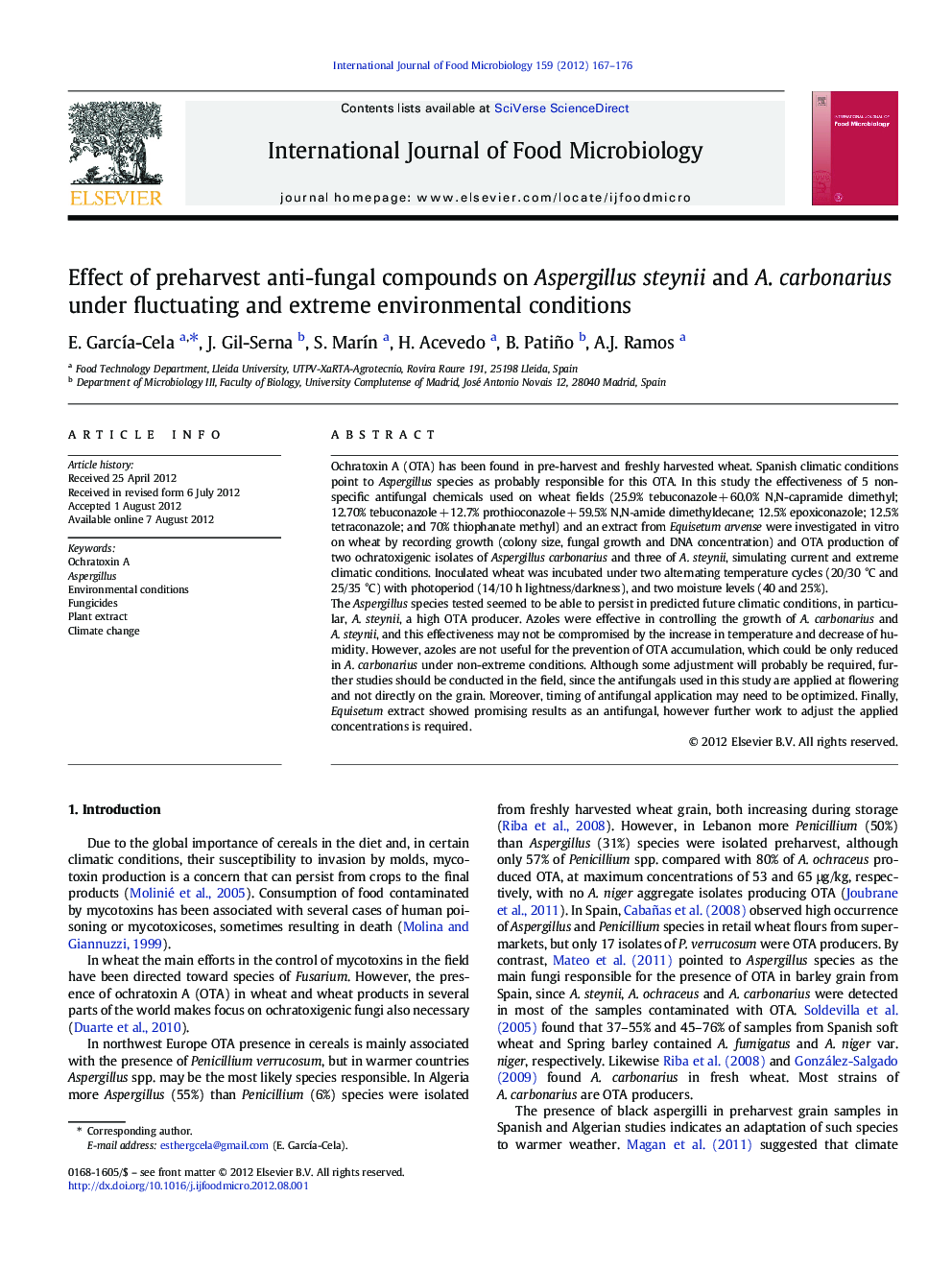| کد مقاله | کد نشریه | سال انتشار | مقاله انگلیسی | نسخه تمام متن |
|---|---|---|---|---|
| 4367583 | 1616637 | 2012 | 10 صفحه PDF | دانلود رایگان |

Ochratoxin A (OTA) has been found in pre-harvest and freshly harvested wheat. Spanish climatic conditions point to Aspergillus species as probably responsible for this OTA. In this study the effectiveness of 5 non-specific antifungal chemicals used on wheat fields (25.9% tebuconazole + 60.0% N,N-capramide dimethyl; 12.70% tebuconazole + 12.7% prothioconazole + 59.5% N,N‐amide dimethyldecane; 12.5% epoxiconazole; 12.5% tetraconazole; and 70% thiophanate methyl) and an extract from Equisetum arvense were investigated in vitro on wheat by recording growth (colony size, fungal growth and DNA concentration) and OTA production of two ochratoxigenic isolates of Aspergillus carbonarius and three of A. steynii, simulating current and extreme climatic conditions. Inoculated wheat was incubated under two alternating temperature cycles (20/30 °C and 25/35 °C) with photoperiod (14/10 h lightness/darkness), and two moisture levels (40 and 25%).The Aspergillus species tested seemed to be able to persist in predicted future climatic conditions, in particular, A. steynii, a high OTA producer. Azoles were effective in controlling the growth of A. carbonarius and A. steynii, and this effectiveness may not be compromised by the increase in temperature and decrease of humidity. However, azoles are not useful for the prevention of OTA accumulation, which could be only reduced in A. carbonarius under non-extreme conditions. Although some adjustment will probably be required, further studies should be conducted in the field, since the antifungals used in this study are applied at flowering and not directly on the grain. Moreover, timing of antifungal application may need to be optimized. Finally, Equisetum extract showed promising results as an antifungal, however further work to adjust the applied concentrations is required.
► A. steynii is slower grower but higher OTA producer than A. carbonarius.
► Growth measurements were not correlated with OTA production.
► Effectiveness of E. arvense extract was comparable to that of chemical antifungals.
► Azoles were effective against growth of both ochratoxigenic species.
► The antifungal effectiveness may be compromised under extreme conditions.
Journal: International Journal of Food Microbiology - Volume 159, Issue 2, 1 October 2012, Pages 167–176